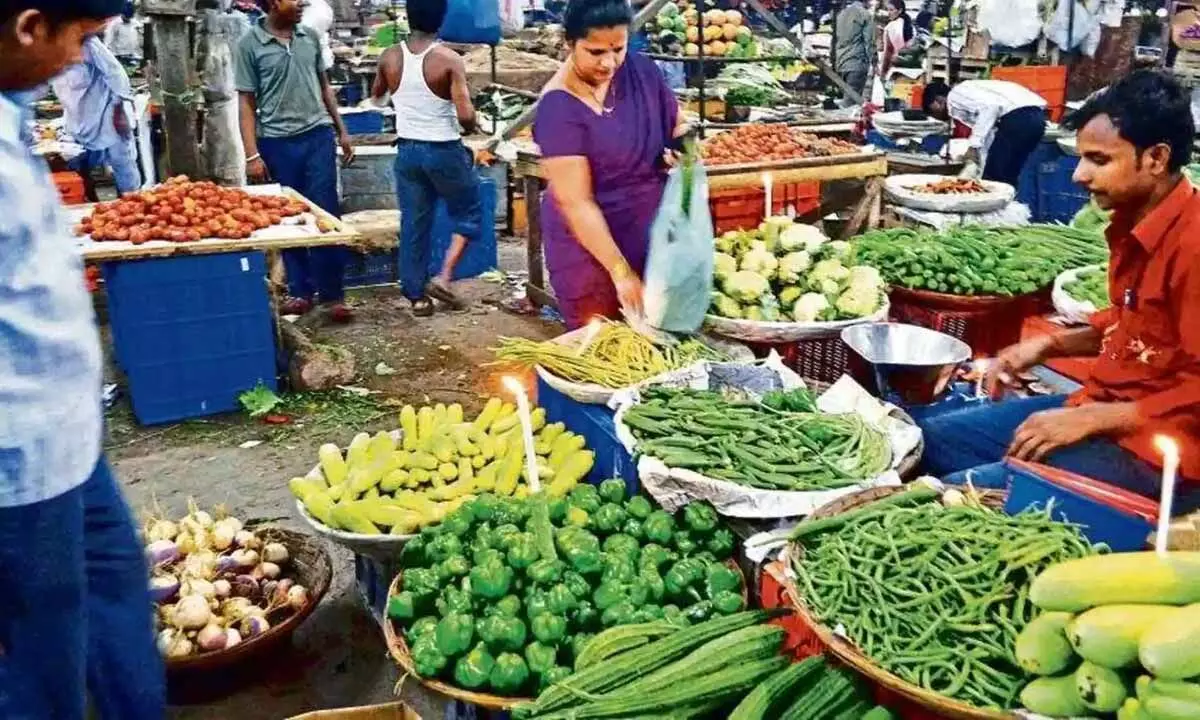Will MSP hike for Kharif crop lead to higher food inflation?
With recent average 6% MSP hike for the kharif crops, there will be an upside pressure of 15 to 20 bps on inflation, says an internal economic research finding of SBI
image for illustrative purpose

The regulatory changes announced by the RBI have mainly focused on increasing credit to construction/housing sector and some announcements in payments systems and margin requirements for non-centrally cleared derivative contracts
Mumbai: As widely expected, RBI's Monetary Policy Committee unanimously decided to increase policy Repo rate by 50 bps to 4.90 per cent while also remaining focused on 'withdrawal of accommodation' to ensure that inflation remains within the target going forward, all the while supporting growth.
RBI has retained its real GDP growth forecast for FY23 at 7.2 per cent with risks broadly balanced. However, inflation projection for FY23 has been revised upwards by 100 bps to 6.7 per cent on account of several factors including tense global geopolitical situation, elevated commodity prices, adverse global supply conditions and heightened crude oil prices. Average crude oil price (Indian basket) assumption is now taken at $105 per barrel from $100 per barrel. With recent average 6 per cent MSP hike for the kharif crops, there will be an upside pressure of 15 to 20 bps on inflation, says an internal economic research finding of SBI.
In terms of liquidity, the RBI has done a smart job and currently net LAF has declined to Rs 3.2 trillion from Rs 5.54 trillion as on March end. Core liquidity has also declined to Rs 7.1 trillion from Rs 8.3 trillion, of which the central government's cash balances are at Rs 3.5 trillion.
"We believe as the Government starts to spend towards the later part of the year, this may necessitate a CRR hike more as a policy tool to support OMO operations at a later date when Government borrowing picks up pace," says Soumya Kanti Gjhosh, SBI group's chief economic advisor.
The regulatory changes announced by the RBI have mainly focused on increasing credit to construction/housing sector and some announcements in payments systems and margin requirements for non-centrally cleared derivative contracts. The increase in limit on individual housing loans by cooperative banks and permitting rural cooperative banks to extend finance to 'commercial real estate - residential housing' within the existing aggregate housing finance limit of 5 per cent of their total assets will provide the necessary push to credit flow to housing sector.
Meanwhile, the RBI Governor has also alluded to the proactive role that fiscal policy can also play in unison with monetary policy as a coordinated attempt to control inflation. This could be achieved with state cutting VAT on fuel as a policy option to anchor inflationary expectations. Interestingly, economic literature suggests that a monetary policy contraction accompanied with fiscal policy expansion is the ideal coordinated policy outcome with the maximum payoff.
The policy also highlighted the global uncertainty with countries grappling with multi-decadal high inflation and slowing growth, persisting geopolitical tensions and sanctions, elevated prices of crude oil and other commodities and lingering Covid-19 related supply chain bottlenecks. As per World Bank's latest assessment, global growth is expected to slump from 5.7 percent in 2021 to 2.9 percent in 2022 - significantly lower than 4.1 percent that was anticipated in January. Russian invasion of Ukraine has magnified the slowdown in the global economy, which is entering what could become a protracted period of feeble growth and elevated inflation.
However, the good thing is that even as global uncertainties are in abundance, growth numbers continue to show optimism locally. Capacity utilization rates have now moved up to 74.5 per cent, with new investment announcements at a record high of Rs 20 trillion in FY22 and manufacturing sector leading from the front. This will give more comfort to RBI in pushing through the rate hikes and controlling inflation as its primary and foremost option.
Against this background, RBI could factor in a rate hike in August and even October policy also, and take it higher than pre-pandemic level by August to 5.25 per cent and in October to 5.5 per cent. The peak interest rate at the end of the cycle now has now a lower bound of 5.5 per cent and could go up to 5.75 per cent depending on inflation trajectory. This is purely data dependent and subject to revisions.
However, 10 year benchmark yields are likely to be capped at 7.5 per cent, even assuming a 175 basis point spread over our peak repo rate at 5.75 per cent. This is because, term premium is likely to be 50 basis points, factoring in a further market adjustment of 50 basis points over and above 5.75 per cent as an insurance rate hike and an additional 75 basis points because of supply overhang. This makes the total spread of 175 basis points over 5.75 per cent. Interestingly, the pre pandemic spread was around 135 basis points.
Finally, with EBLR linked loans gaining traction, repo rate increase will curtail inflation through the credit channel as well. As every 1 bps increase in repo has combined impact of Rs 305 crore on demand from retail & MSME consumers, with terminal repo rate at 5.75 per cent there will be reduction in demand from consumers to the tune of Rs 45,000 crore.

